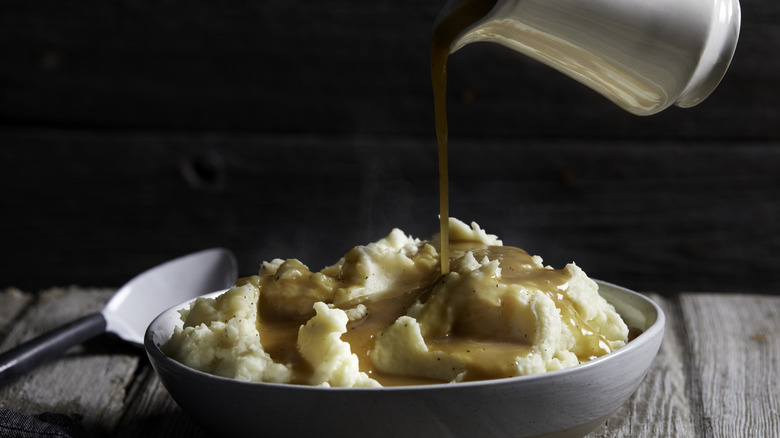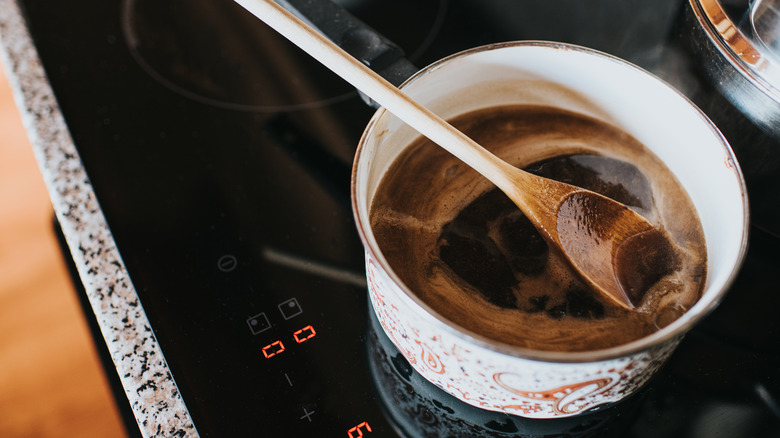Here's How To Thicken Up Gravy Without A Slurry
One of the more frustrating finishing touches to a meal can be a too-thin gravy. Everything took hours to make, but the runny gravy waters everything down as much as it adds flavor. A cooking slurry of water and either cornstarch or fluffed flour can thicken things up, but these are deceptively difficult to get right and can give your gravy a silkiness (cornstarch) or heaviness (flour) that you might not want, depending on the dish.
As people say, patience is a virtue: A great way to thicken up your gravy without a slurry is to simply cook and stir a bit longer. Reducing the gravy on the stove takes more time than using a slurry, but is a good way to thicken things up without adding any unwanted surprises to your flavor or texture profile.
Reducing the gravy has its limits, however. It requires constant attention and, if you're not careful, can wind up ruining the gravy anyway.
Reduce gravy to thicken it without any additions
Reducing your gravy on the stove is a lot like the final step in making a gravy from scratch. Put it in a pan on low heat for a long time. For best results, whisk continuously until the gravy reaches the desired thickness. Insufficient whisking can lead to disappointing results, including burned gravy.
Another reason to whisk your gravy as you reduce it is to make sure it doesn't over-reduce, which can create odd textures and over-concentrated flavor, especially salt. In most cases, if your gravy does over-reduce, you can add an appropriate cooking stock and re-reduce to try to rescue it. Be careful though, as this also adds extra flavor (including salt) if you are using a salted stock.
Reducing the gravy is the best way to thicken it, if you've got the time to do so — getting the consistency just right, ideally without adding anything to the gravy. But if time is a real constraint, perhaps the fastest thickening agent is instant mashed potatoes. They also add salt though, so, again, don't overdo it if you go this route.

